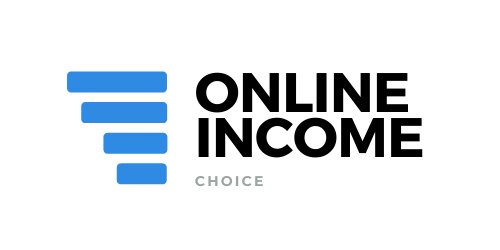A Data-Driven Guide: Strategies For Profitable Affiliate Niches
NATE SILVER | STATISTICIAN & POLITICAL ANALYST
People should be more sceptical...
On average, people should be more sceptical when they see numbers. They should be more willing to play around with the data themselves.
Did you know 95% of affiliate marketers fail in their first year? This statistic from the Digital Marketing Institute highlights how crucial choosing the right niche is. Success or struggle often depends on this first strategic decision in your online business journey.
When you select one of profitable affiliate niches that aligns with both market demand and your personal interests, you establish a solid foundation for sustainable growth. Conversely, diving into oversaturated markets without proper research can waste months of effort, leading to frustration and burnout.
The good news is that niche selection doesn't have to be based on guesswork. With systematic research and objective evaluation, you can identify opportunities that others overlook. This comprehensive guide will show you how to discover profitable markets while building a business aligned with your expertise and interests.
Whether you're launching your first affiliate site or expanding your existing portfolio, the principles of effective niche selection remain consistent. By the end of this evidence-based guide, you'll have a clear methodology to identify, evaluate, and select niches with genuine profit potential.
Key Takeaways:
- Choosing the right niche is the most crucial decision for affiliate marketing success, with research showing it's a primary factor in the 95% failure rate.
- Market demand, competition levels, and personal expertise should guide your selection process.
- Research-based niche selection dramatically increases your chances of profitability according to industry studies.
- Avoid oversaturated markets unless you have specialized knowledge or a unique advantage.
- The most sustainable niches balance your expertise with profit potential for long-term growth.
- Strategic niche selection saves significant time and resources in the long run.
Want to listen? This content is available on Spotify
Ready to start?
Understanding The Fundamentals Of Affiliate Niche Selection
Successful affiliate marketing begins with selecting the right niche. This choice influences your content strategy, target audience, and revenue potential. Understanding the characteristics that differentiate profitable niches from unprofitable ones is essential for making informed decisions.
What Makes A Niche Profitable In Affiliate Marketing
A profitable niche isn't merely popular—it's commercially viable. According to industry research, the most successful niches share several key characteristics:
First, they demonstrate substantial market demand. Data shows that people are actively searching for solutions to specific problems, creating a steady stream of potential customers.
Second, they exhibit balanced competition levels. Not excessive, yet not negligible. This equilibrium indicates market interest while still offering entry opportunities for new affiliates.
Third, they provide competitive commission structures. This ensures your promotional efforts generate worthwhile returns. Niches with higher-priced products typically offer larger commission potential.
Fourth, they show strong conversion potential. Visitor-to-buyer conversion rates in profitable niches typically range from 2-5%, significantly higher than the 1% industry average according to recent affiliate marketing benchmarks.
The Balance Between Expertise And Profit Potential
Selecting a niche presents a fundamental question: Should you prioritize your existing knowledge or pursue maximum profit potential? Research suggests the optimal approach combines both elements.
Leveraging your expertise keeps you motivated and enhances content quality. Your authentic knowledge and experience will resonate with your audience and establish credibility—a crucial factor in Google's E-E-A-T guidelines.
However, expertise alone isn't sufficient. Market analysis must confirm profit viability. The most successful affiliate marketers identify niches where their knowledge intersects with demonstrated market demand and monetization opportunities.
Evergreen vs. Trending Niches: Evidence-Based Comparison
Affiliate niches generally fall into two categories: evergreen and trending. Each presents distinct advantages and challenges based on market data:
| Aspect | Evergreen Niches | Trending Niches |
|---|---|---|
| Longevity | Consistent demand year after year (proven by stable search trends) | Potentially short-lived popularity (often showing spike-and-drop patterns) |
| Competition | Usually higher and more established (higher domain authority competitors) | Initially lower, but can grow rapidly (opportunity window is shorter) |
| Content Strategy | Focus on comprehensive, timeless resources (higher investment, longer ROI) | Requires constant updates and trend monitoring (higher maintenance) |
| Risk Level | Lower risk, steady returns (documented by affiliate program data) | Higher risk, potential for quick profits (higher variance in outcomes) |
| Examples | Health, personal finance, relationships | New technologies, fashion trends, seasonal products |
Industry data shows that many successful affiliate marketers focus primarily on evergreen niches while strategically incorporating trending topics for seasonal traffic opportunities. This balanced approach offers both stability and growth potential according to affiliate network performance reports.
13 Most Profitable Affiliate Marketing Niches
Essential Market Research Techniques For Affiliate Marketers
Success in affiliate marketing correlates strongly with research quality. By mastering data-driven research techniques, you can identify profitable niches that others miss, significantly improving your chances of long-term success. Let's examine the most effective methods for discovering lucrative opportunities based on actual market performance.
Using Keyword Research Tools To Identify Opportunities
Keyword research forms the foundation of profitable niche selection. According to SEMrush's industry study, keywords indicating purchase intent convert at 2-3 times the rate of informational queries. Look specifically for keywords that signal buying readiness—terms like "best," "review," "vs," and "top" often indicate users who are close to making a purchase decision.
To systematically identify these high-value keywords:
- Use professional tools like Ahrefs Keyword Explorer, SEMrush, or Google Keyword Planner to analyze your potential niche topic.
- Filter specifically for commercial intent keywords ("best," "cheapest," "review").
- Evaluate both search volume and keyword difficulty metrics.
- Prioritize keywords with substantial search volume (1,000+ monthly searches) but manageable competition (KD score under 30).
Focus particularly on long-tail keywords with clear buying intent but moderate competition. Data shows these keywords typically convert at 2.5% or higher, making them especially valuable for new affiliate marketers.

Analyzing Competitor Websites And Strategies
Competitor analysis provides critical insights into market viability. According to a study by Ahrefs, understanding why competitors succeed is more valuable than simply observing what they do.
When analyzing competitor sites, systematically evaluate:
- Content formats that generate the highest user engagement (measured by time on page and comment activity)
- The specific products they promote and how they're presented to the audience
- Their primary traffic sources and backlink acquisition strategies
- Diversification of revenue streams beyond affiliate links
Tools like Similarweb and Ahrefs can reveal competitors' traffic patterns and top-performing content. This data helps identify strategic gaps you can fill with your unique approach, creating competitive advantage.
Leveraging Social Media For Niche Validation
Social media platforms offer real-time market intelligence. Before committing to a niche, validate your concepts through systematic social listening.
Effective social validation techniques include:
- Joining and monitoring Facebook Groups and Reddit communities related to your potential niche
- Tracking Pinterest trend data for product interest patterns
- Analyzing engagement metrics on specific content types
- Cataloging frequently asked questions and persistent pain points
Discover The Path To Passive Income Success
Take the first step towards a lucrative future - sign up for exclusive insights and resources!
The size and activity level of these communities provide quantifiable indicators of market potential. The specific questions and problems repeatedly discussed represent direct content opportunities with built-in audience interest.
| Research Method | Best For | Key Metrics | Time Investment | Expected Outcome |
|---|---|---|---|---|
| Keyword Research | Finding commercial intent | Search volume, KD score, CPC | Medium (3-5 hours) | List of 20-30 profitable keywords |
| Competitor Analysis | Identifying proven strategies | Traffic sources, content types, monetization methods | High (5-10 hours) | Gap analysis and differentiation strategy |
| Social Validation | Testing audience interest | Engagement rates, community size, question frequency | Low (2-3 hours) | Validation of market problems and needs |
| Trend Analysis | Spotting emerging niches | Growth rate, search trends, YoY comparison | Medium (3-4 hours) | Early identification of growth opportunities |
Identifying Profitable Affiliate Niches: 7 Key Characteristics
Not all affiliate niches offer equal potential. According to industry research, the most profitable niches consistently demonstrate seven key characteristics. Understanding these traits helps you distinguish genuine opportunities from superficially attractive but ultimately unprofitable markets.




High Consumer Demand And Search Volume
The foundation of any profitable niche is substantial consumer demand. Market data shows people must be actively searching for solutions and demonstrating willingness to pay for them.
Use tools like Google Trends, Ahrefs, or SEMrush to quantify search volume. Look for consistent or growing interest patterns rather than declining trends. Focus particularly on searches with commercial intent, such as "best weight loss programs" rather than "how to lose weight."
Research from affiliate networks shows that even relatively small niches with highly motivated buyers (indicated by high CPC values) often outperform larger niches with casual visitors. For example, a niche with 10,000 monthly searches and $5 CPC typically generates more affiliate revenue than one with 100,000 searches and $0.50 CPC.
Reasonable Competition Levels
The ideal niche exhibits balanced competition—sufficient to validate demand but not so intense that new entrants struggle to gain visibility. Analyze the first page of Google results for your target keywords to assess competitiveness.
If the SERP is dominated exclusively by major brands and established authorities with domain ratings above 80, breaking through may prove challenging. However, when you see smaller sites (DR 30-50) ranking successfully, that signals opportunity. Tools like Moz's Domain Authority can help quantify whether you can realistically compete in a given space.
Strong Commission Structures
Commission rates vary dramatically across niches. Industry data shows the most profitable affiliate programs typically offer commissions of 20%+ or substantial flat fees per sale.
Digital products like software and online courses generally provide the highest commission rates (30-50% is common). Physical products may offer lower percentage commissions but can compensate through higher average order values and conversion rates.
Recurring Commission Potential
The most lucrative niches often feature subscription-based products that generate ongoing income. A single customer acquisition can yield commission payments for months or years.
Look specifically for SaaS products, membership sites, and subscription boxes that offer recurring commissions. When evaluating these opportunities, consider both the commission rate and typical customer retention rates to estimate lifetime value. According to industry data, niches with strong recurring commission models can generate 3-5 times more revenue per visitor than one-time commission structures.
These four characteristics form the core criteria for profitable affiliate niches. The remaining three factors—product quality, audience alignment, and growth potential—are equally important for building a sustainable income stream.

Step-By-Step Process To Discover Untapped Niche Markets
Finding profitable affiliate niches doesn't require guesswork. Follow this systematic, data-driven process to identify hidden opportunities before they become oversaturated. This methodical approach to niche discovery has been validated by successful affiliate marketers across multiple industries.
Identifying Problems And Pain Points
The most profitable untapped niche markets typically address specific consumer problems. Begin your research by examining online communities where your potential audience congregates:
- Analyze Reddit threads, Quora questions, and Facebook groups for recurring themes.
- Study Amazon product reviews for common complaints and unmet needs.
- Examine customer support forums for popular products to identify friction points.
- Monitor X platform hashtags related to your areas of interest.
Look specifically for patterns in questions and frustrations. When you observe the same problems mentioned repeatedly without adequate solutions, you've identified a potential market opportunity. According to conversion optimization research, products that solve clearly articulated pain points convert at 2-3 times the rate of general-purpose offerings.
How To Choose An Affiliate Marketing Niche
Researching Emerging Trends And Technologies
Timing is critical in niche selection. Look for trends that show clear growth momentum but haven't yet reached market saturation. Utilize these research tools to identify rising opportunities:
- Google Trends to track search interest patterns over time.
- Industry reports from research firms like Gartner and Forrester.
- Consumer electronics adoption curve data.
- Crowdfunding platforms like Kickstarter for early-stage product validation.
For example, the home fitness equipment niche experienced 300% growth during the pandemic period. Affiliates who identified this trend early captured significant market share. Your objective is to identify the next growth market before it becomes mainstream, positioning yourself as an early authority.
Finding Sub-Niches Within Popular Categories
Specialization within broader markets often yields higher conversion rates and lower competition. Rather than targeting the general "fitness" niche, consider specialized segments like "strength training for women over 50" or "plant-based nutrition for endurance athletes."
This strategic approach offers multiple advantages:
- You target a specific audience with distinct needs and higher purchase intent.
- You face reduced competition compared to broader markets.
- You can create highly relevant content that resonates with your specific audience.
- You position yourself as a specialist rather than a generalist.
Research shows that conversion rates in well-defined sub-niches typically exceed those in broader markets by 30-50%, making this approach particularly effective for new affiliate marketers.
Unlock Your Online Earning Potential
Subscribe and take the first step towards financial freedom by discovering proven strategies for generating income online. Fill in your details below and click the button to get started now!
Validating Niche Viability Before Committing
Before investing significant resources in a niche, validate its commercial viability. This critical step prevents wasted effort on niches that lack profit potential.
| Validation Method | What to Look For | Tools to Use | Red Flags |
|---|---|---|---|
| Keyword Analysis | Search volume (1,000+ monthly), competition level (KD<30) | Ahrefs, SEMrush, Ubersuggest | Very low search volume (<500/month), extremely high competition (KD>70) |
| Affiliate Program Check | Commission rates (>10%), cookie duration (>30 days) | Affiliate networks, merchant websites | Low commissions (<5%), short cookies (<7 days), limited product selection |
| Audience Assessment | Purchasing power, engagement level, problem awareness | Facebook Audience Insights, surveys | Low disposable income, minimal buying intent, undefined problems |
| Content Gap Analysis | Underserved information needs, low-quality existing content | BuzzSumo, AnswerThePublic | Oversaturated content landscape, no clear information gaps |
Finding profitable niches requires both analytical skills and market intuition. The most successful affiliate marketers combine data-driven research with qualitative insights. By following this systematic approach, you'll significantly increase your chances of identifying profitable niches for your affiliate business.
Top 10 Profitable Affiliate Niches For 2025
Identifying the most promising affiliate niches for 2025 requires analyzing emerging trends, market gaps, and technological shifts. As consumer behaviors evolve, certain markets demonstrate exceptional growth potential and monetization opportunities. Let's examine the top affiliate niches projected to deliver strong returns based on current market data.
Health And Wellness Products
The health and wellness sector continues to experience robust growth, with the global market projected to reach $7.6 trillion by 2025 according to the Global Wellness Institute. Consumer focus has shifted toward preventative health approaches and natural solutions. Mental health resources, personalized nutrition, and fitness technology represent particularly strong sub-niches.
Post-pandemic consumer behavior shows increased interest in immune support, home fitness equipment, and telehealth services. Affiliate programs like Thrive Market and Organifi offer competitive commission structures (30-40%) and extended cookie durations, making them particularly attractive to affiliates in this space.
Personal Finance And Investment Tools
Economic uncertainty has driven increased demand for financial education and investment tools. According to Statista's Financial Technology Report, the fintech market is projected to grow at 13.7% annually through 2025. Cryptocurrency education, sustainable investing platforms, and budgeting applications represent especially promising segments.
Affiliate programs from financial platforms like Robinhood, Acorns, and cryptocurrency exchanges typically offer substantial compensation ($30-100 per qualified lead). The recurring revenue potential from subscription-based financial services makes this niche particularly lucrative for affiliates who can establish trust with their audience.
Remote Work And Productivity Solutions
The shift toward flexible work arrangements has created sustained demand for home office equipment, collaboration tools, and productivity applications. According to Global Workplace Analytics research, 25-30% of the workforce will work from home multiple days per week by the end of 2025, creating ongoing market opportunities.
Software platforms like Monday.com, Asana, and ergonomic furniture brands offer competitive commission rates (15-30%). Many of these programs feature recurring commission structures that reward affiliates for each subscription renewal, creating predictable income streams.
Sustainable Living And Eco-Friendly Products
Consumer preference for environmentally responsible products continues to grow, spanning categories from home goods to apparel and personal care. According to a recent Nielsen's Global Sustainability Report, 73% of global consumers say they would definitely change their consumption habits to reduce environmental impact.
These products typically command premium pricing and attract loyal customers, creating favorable conditions for affiliate marketing. Programs like EarthHero and Public Goods offer commission rates of 10-20%. Their customers demonstrate higher-than-average repeat purchase behavior, leading to increased lifetime value.
| Niche | Average Commission | Cookie Duration | Market Growth Rate | Recommended Programs | Conversion Rate |
|---|---|---|---|---|---|
| Health & Wellness | 30-40% | 30-60 days | 12.8% annually | Thrive Market, Organifi | 2.7% |
| Personal Finance | $30-100 per lead | 30-90 days | 9.6% annually | Robinhood, Acorns | 3.2% |
| Remote Work | 15-30% | 30-45 days | 16.2% annually | Monday.com, Asana | 2.5% |
| Sustainable Living | 10-20% | 30 days | 10.5% annually | EarthHero, Public Goods | 2.3% |
Additional promising niches include gaming technology, pet wellness, online education platforms, smart home systems, experiential travel, and curated subscription services. When selecting your focus area, apply the research methodologies outlined earlier to ensure alignment with your expertise and target audience.

Evaluating Affiliate Programs Within Your Chosen Niche
Your success in affiliate marketing depends not only on selecting the right niche but also on partnering with the right affiliate programs. Even the most promising niche can underperform if you choose suboptimal affiliate partnerships. Let's examine how to evaluate and select the best affiliate programs for sustainable passive income.
Commission Structure Analysis
Commission percentage alone provides an incomplete picture of program value. A comprehensive evaluation requires deeper analysis. For example, a 15% commission might initially appear superior to 10%, but this assessment changes when considering average order value.
In the health and wellness niche, Bodybuilding.com offers up to 8% commission—seemingly modest until you factor in their average order value of $120+. This can potentially outperform higher percentage programs with lower average purchases. Determine whether commissions are flat-rate or percentage-based, and look for tiered structures that reward performance improvements.
Use this formula to estimate potential earnings: Commission Rate × Average Order Value × Conversion Rate. This calculation provides a more accurate projection of program profitability than commission rate alone.
Newsletter Sign Up
Discover The Path To Passive Income Success
Take the first step towards a lucrative future - sign up for exclusive insights and resources!
Cookie Duration And Attribution Models
Cookie duration significantly impacts earnings potential by determining how long you receive credit for referred customers. While 30-day cookies are industry standard, high-performing programs often offer 60, 90, or even lifetime cookies.
Attribution models also warrant careful consideration. First-click attribution awards commission to the affiliate who initially referred the customer, while last-click rewards the final referrer before purchase. ClickBank, popular in the health niche, employs last-click attribution but compensates with 60-day cookies.
According to Affiliate Insider's Conversion Optimization Guide, extending cookie duration from 30 to 60 days typically increases conversion rates by 15-25%, making this an important factor in program selection.
Payment Terms And Reliability
Payment processing efficiency directly affects your cash flow and operational stability. Evaluate these critical factors:
- Payment threshold (lower thresholds of $25-50 benefit beginners).
- Payment frequency (monthly, bi-weekly, or weekly schedules).
- Available payment methods (PayPal, direct deposit, cryptocurrency options).
- Documented history of timely, accurate payments.
Verify program reliability through affiliate marketing forums and independent reviews. Amazon Associates maintains a strong reputation for payment reliability in the pet products niche, while Chewy.com offers favorable terms with consistent payment processing.

Marketing Support And Resources
The most valuable affiliate programs provide comprehensive resources to support your promotional efforts. Look specifically for:
- High-quality creative assets including banners and product images.
- Product data feeds for custom promotion development.
- Exclusive discount codes for your audience.
- Dedicated affiliate managers offering personalized support.
Petco's affiliate program exemplifies this approach, providing seasonal promotional materials and a comprehensive resource center. These support elements can significantly enhance your promotional effectiveness while reducing content development time.
The optimal affiliate program balances competitive commissions with reliability and comprehensive support. Research shows that programs with slightly lower commissions but superior support resources often generate higher overall revenue than high-commission programs lacking adequate partner resources.
Building Your Affiliate Marketing Strategy Around Your Niche
Developing a comprehensive affiliate marketing strategy is essential for monetization success. Industry leaders recognize that generic approaches yield suboptimal results. Your strategy must align with your niche's specific characteristics and your audience's preferences. Let's examine how to construct a detailed affiliate marketing plan that maximizes your probability of success.

Creating Valuable Content That Converts
Different niches respond to different content formats. Technology products typically perform well with comparison articles and demonstration videos. Health niches generally benefit from educational content that establishes trust before introducing product solutions.
Develop content that addresses specific problems and naturally incorporates your affiliate recommendations. Product reviews should emphasize benefits that directly solve your audience's identified pain points. Case studies featuring real-world results can be particularly effective in competitive niches, with conversion rates typically 2-3 times higher than generic product descriptions.
Developing Trust And Authority In Your Niche
Trust forms the foundation of affiliate marketing success. Position yourself as a credible information source by providing thoroughly researched, objective information. Share personal experiences with products when possible and maintain complete transparency regarding affiliate relationships.
Collaborating with recognized experts in your field through guest posts or interview content can accelerate authority building. These partnerships can also open additional monetization channels beyond standard affiliate links.
Implementing Effective Promotion Techniques
Utilize promotion channels strategically based on your audience's online behavior patterns. While SEO remains fundamental for most niches, don't overlook email marketing for nurturing leads through the decision process.
Select social platforms that align with your niche characteristics. Pinterest drives significant traffic for home décor and DIY niches, while LinkedIn performs well for B2B software. Certain niches also benefit from influencer partnerships to expand reach beyond organic channels.
Tracking Performance And Optimizing Results
Implement comprehensive tracking systems to measure strategy effectiveness. Look beyond basic metrics like clicks and conversions to understand which content types generate the highest revenue per visitor.
Establish a systematic testing and optimization schedule. Even incremental improvements compound over time. The most successful affiliate marketers continuously refine their approaches based on performance data rather than assumptions.
The Bottom Line
Finding the right affiliate niche represents the critical first step toward sustainable online income. While the research process requires diligence, it dramatically separates successful affiliates from those who struggle. The ideal niche combines strong market demand, manageable competition, attractive commission structures, and alignment with your expertise. Tools like Ahrefs and SEMrush allow you to validate your niche concepts before significant investment.
Begin with a single, well-researched niche rather than diversifying prematurely. This focused approach accelerates your path to authority status. Many successful affiliate marketers started in relatively specialized niches with moderate competition levels. This comprehensive guide provides a roadmap for identifying profitable niches capable of generating consistent income. While your journey may involve some trial and error, each step builds valuable market intelligence.
Start researching potential niches today using the methodologies outlined in this guide. Evaluate each opportunity against the criteria we've discussed. The most rewarding niche will balance your personal expertise with demonstrated market needs. Your next successful affiliate marketing venture awaits—it's simply a matter of finding the niche that excites you while serving a receptive audience. The opportunity to build a thriving affiliate business has never been more accessible to those willing to conduct thorough research.
Glossary Of Key Terms
FAQ
In 2025, the best niches for affiliate marketing are likely to include sectors that focus on health and wellness, finance, technology, and sustainable living. The health and wellness niche continues to thrive due to increasing consumer interest in personal well-being.
Similarly, the finance niche offers opportunities with topics like investment advice and budgeting tools. Additionally, emerging technologies and sustainable practices present lucrative options for affiliate marketers. Identifying a profitable niche and aligning it with current trends will be crucial for success.
To find a profitable niche for affiliate marketing, start by researching trending topics and consumer demands. Utilize tools like Google Trends, keyword planners, and social media insights to identify areas with high interest and low competition.
Consider your passions and expertise, as this can help you stay committed and knowledgeable in your chosen niche in affiliate marketing. Joining forums and online communities can also provide valuable insights into what products or services people are seeking, aiding you in choosing the right niche.
An evergreen niche refers to a market segment that remains relevant over time, regardless of trends. Such niches include health, finance, and relationships, which consistently attract audience interest.
Focusing on an evergreen niche is important because it offers the potential for long-term affiliate marketing success. By promoting products or services in a stable market, affiliate marketers can generate consistent income without constantly searching for new trends.
To choose the right niche for your affiliate marketing business, consider your interests, expertise, and market demand. Look for a profitable niche in affiliate marketing that resonates with you personally, as this will make content creation more enjoyable.
Additionally, evaluate the competition within the niche market to ensure there is enough room for your unique perspective. Testing various affiliate programs that offer products in your chosen niche can also help you gauge profitability and audience engagement.
